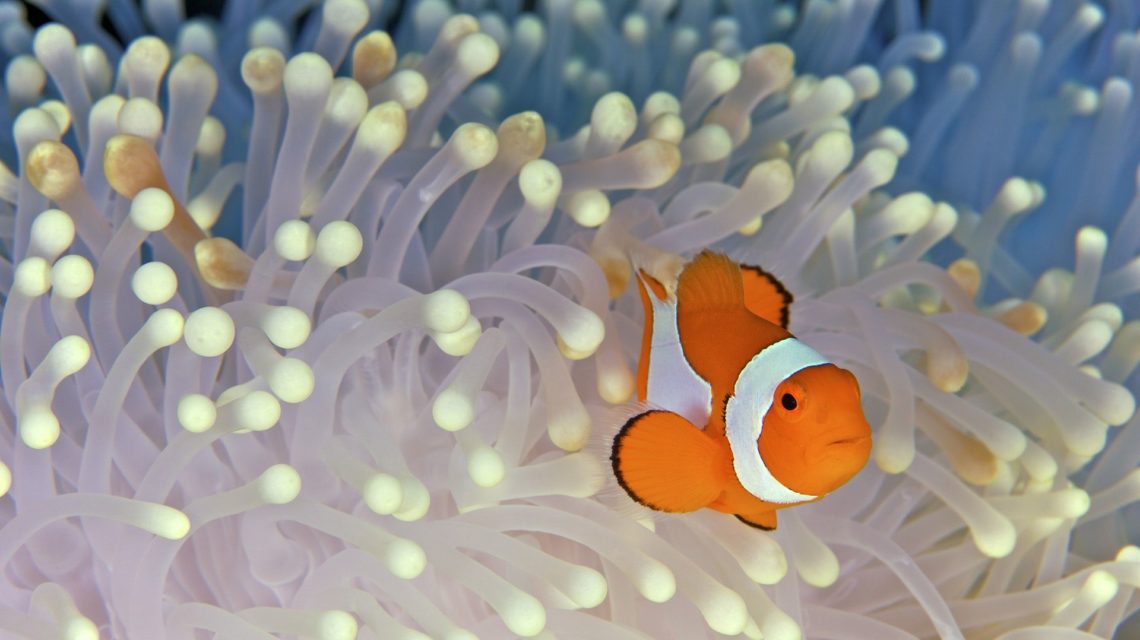Genetic study of clownfish population – Key findings – UPSC/PSC 08/12/2019 – Posted in: Daily News – Tags: Sea anemone
CLOWNFISH
A team of researchers monitored clownfish in the lagoons of Kimbe Bay (a biodiversity hot spot in Papua New Guinea) for more than a decade. Researchers concluded that clownfish cannot be expected to be able to adapt to a rapidly changing environment as it does not have the genetic capacity to do so.
Key Points
- Clownfish are found in various parts of the Indian and Pacific Oceans, including the Great Barrier Reef.
- Clownfish typically live at the bottom of shallow seas in sheltered reefs or in shallow lagoons. It is this habitat that is under threat.
- Clownfish breed only in sea anemones, sharing a symbiotic bond.
- Clownfish shelter in the anemone and are the only fish that do not get stung by the nematocysts of the anemone. The anemone benefits because clownfish can defend the anemone from fish that might eat it. They never live anywhere but in the anemone. And now the anemones, like coral reefs in general, are under direct threat from the impacts of climate change.
Why anemones are under threat?
The anemones share another symbiotic bond, with algae. Under stress in warming waters, the algae leave the anemones. If the algae stay away too long, the anemone starve to death. Which leaves the clownfish without a home.
Sea anemone
According to National Geographic, sea anemone is named after the equally flashy terrestrial anemone flower. A close relative of coral and jellyfish, anemones are stinging polyps that spend most of their time attached to rocks on the sea bottom or on coral reefs waiting for fish to pass close enough to get ensnared in their venom-filled tentacles.
Sea anemones breed by liberating sperm and eggs through the mouth into the sea. The resulting fertilized eggs develop into planula larvae which, after being planktonic for a while, settle on the seabed and develop directly into juvenile polyps.

Sea anemone
Conclusion
- There are no particular genetic variants that contribute more offspring to the next generation. The quality of the host anemone contributes most to the ability of the clownfish to renew its population.
- Their future depends on our ability to maintain the quality of their habitat,” the authors conclude.
Kimbe Bay
Kimbe Bay is a large bay in West New Britain Province, off the northern coast of New Britain, Papua New Guinea. Kimbe Bay is an important biodiversity hotspot. 60 percent of the coral species of the entire Indo-Pacific region live here. Kimbe Bay is the home of more than 860 coral reef fish species.
Due to its beauty, it is also a popular diving site.
Source: Indian Express
READ MORE DAILY NEWS
- Electoral Literacy Clubs
- Extension of SC/ST reservation for another 10 years
- Quacquarelli Symonds (QS) World University Rankings for Asia 2020
- Automotive Telematics for Insurance
- Startup India Global Venture Capital Summit
- Personal Data Protection bill 2019
- Report on Biometric Data
- Bharat Bond Exchange Traded Fund
You are on the Best Online IAS preparation platform. You are learning under experts.
We are present on Facebook- Diligent IAS, LinkedIn- Diligent IAS, YouTube- Diligent IAS, Instagram- Diligent IAS. Get in touch with us.

